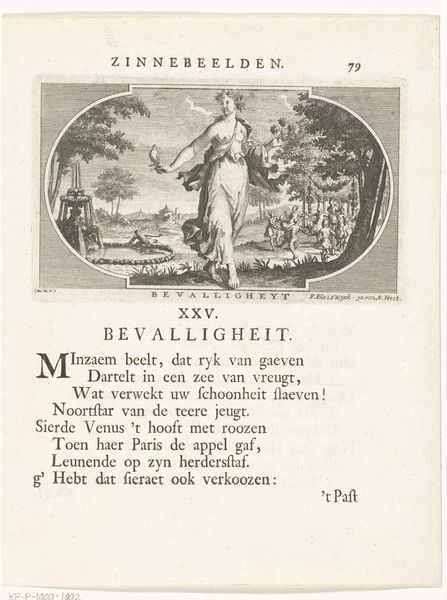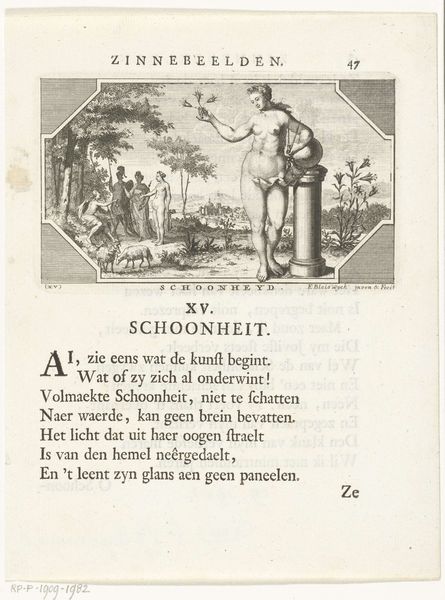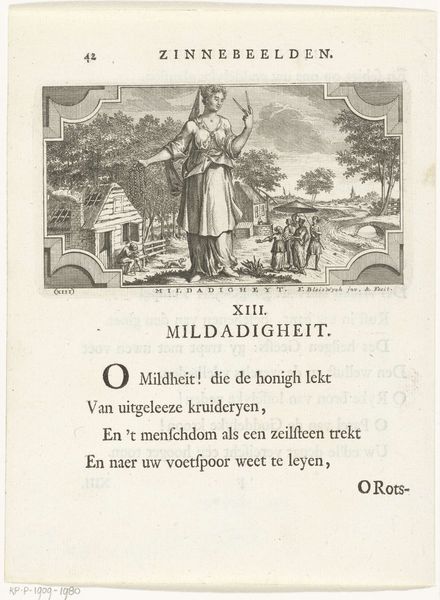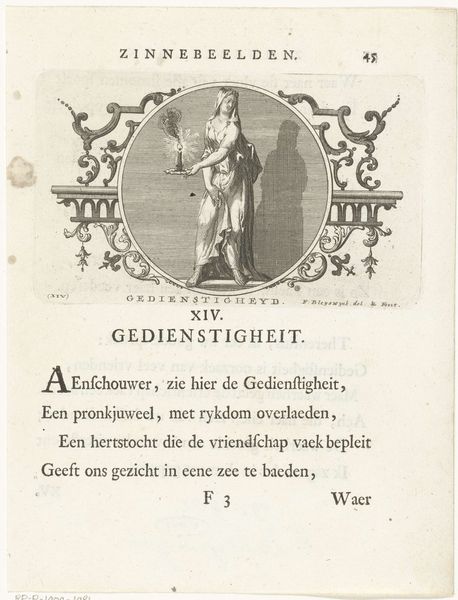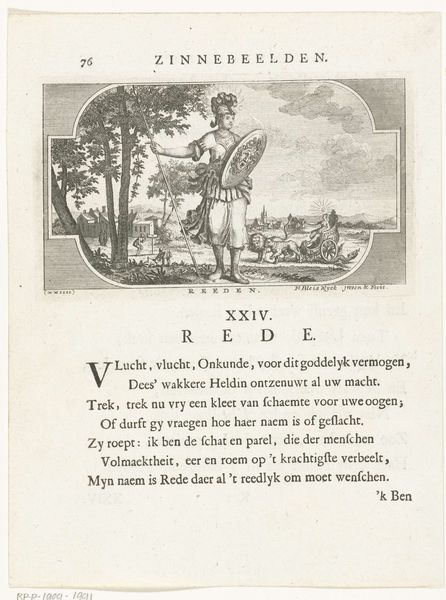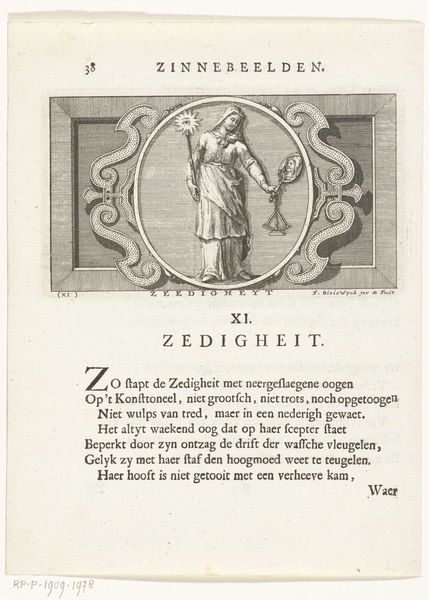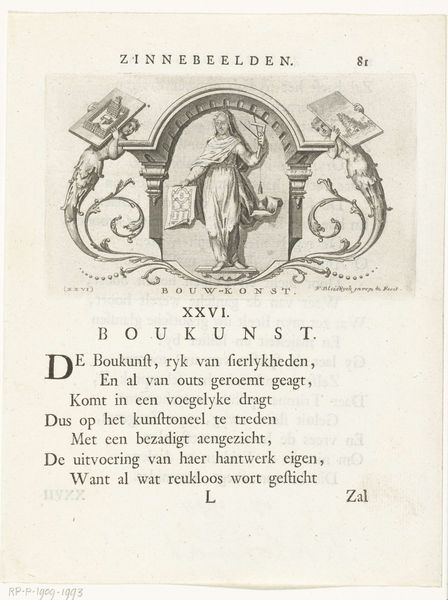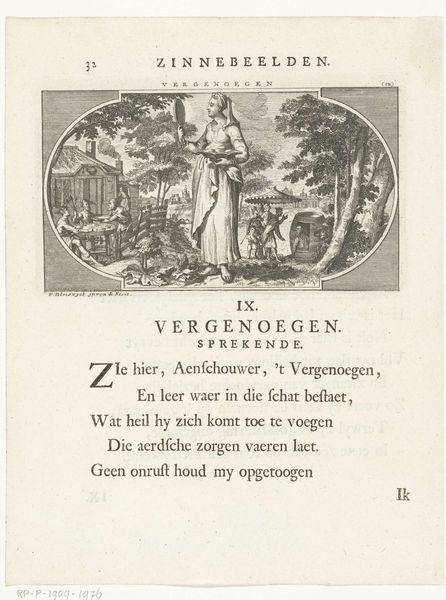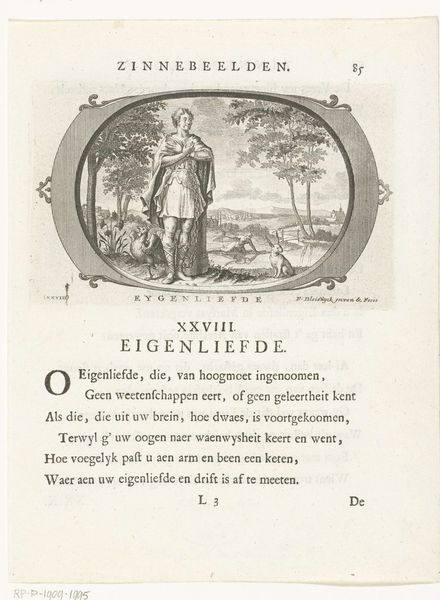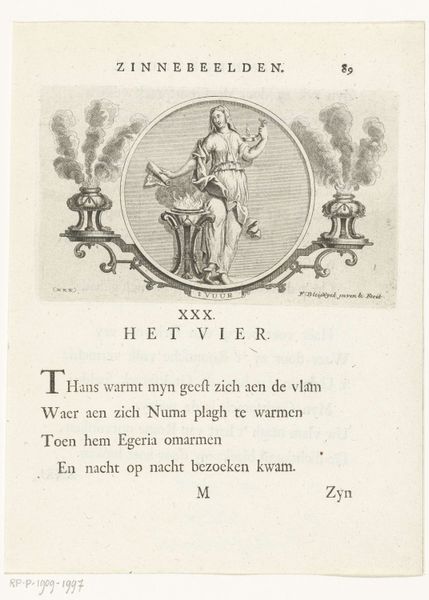
Embleem met allegorie op bedachtzaamheid (middelmatigheid) 1681 - 1737
0:00
0:00
print, engraving
#
allegory
#
narrative-art
#
baroque
# print
#
old engraving style
#
figuration
#
line
#
engraving
Dimensions: height 196 mm, width 151 mm, height 129 mm, width 75 mm
Copyright: Rijks Museum: Open Domain
Curator: This engraving, "Emblem with Allegory on Prudence (Mediocrity)" by François van Bleyswijck, created sometime between 1681 and 1737, presents an interesting visual puzzle, doesn’t it? It’s at the Rijksmuseum. What strikes you about it? Editor: The contrast between the lion and the lamb being led by the same figure immediately jumps out. And, of course, the title points to "mediocrity," which feels almost…judgmental? I’m curious, though – how would you unpack the meaning behind this particular piece? Curator: Well, from a materialist perspective, let’s consider the function of emblem books at this time. They were, in a sense, mass-produced knowledge. Engravings like this circulated widely, often among a burgeoning merchant class, eager to absorb classical learning and project a cultivated image. The labor of the engraver, translating complex ideas into reproducible images, speaks to the democratization of knowledge. Doesn't it highlight the means through which complex allegories were disseminated and consumed? Editor: I see your point! So, rather than just looking at the symbolism, we think about the labor involved and the intended audience. Did the choice of engraving—a reproducible medium—influence the artwork’s message? Curator: Precisely. The act of engraving itself, the precise and repeatable labor, echoes the concept of "middelmatigheid" – a balancing act, a cautious avoidance of extremes. Consider, too, the economics of printmaking. Did the pressure to produce saleable images temper artistic innovation? Or, perhaps, enable a broader engagement with philosophical ideas? What's your read on it? Editor: It’s fascinating to consider the artwork not just as a finished object but also as a product of its time, shaped by economic and social forces. So, the ‘middelmatigheid’ wasn’t necessarily negative, but instead referred to the material realities of art production. Curator: Indeed. Understanding the mechanics of production allows us to appreciate the social and intellectual contexts that shaped the creation and reception of this image. It’s a lens for considering art's role in broader cultural exchanges. Editor: That really shifts my perspective! I came in looking for symbolic meaning, but now I see how the material aspects of production are just as vital to interpreting the work. Thanks!
Comments
No comments
Be the first to comment and join the conversation on the ultimate creative platform.
